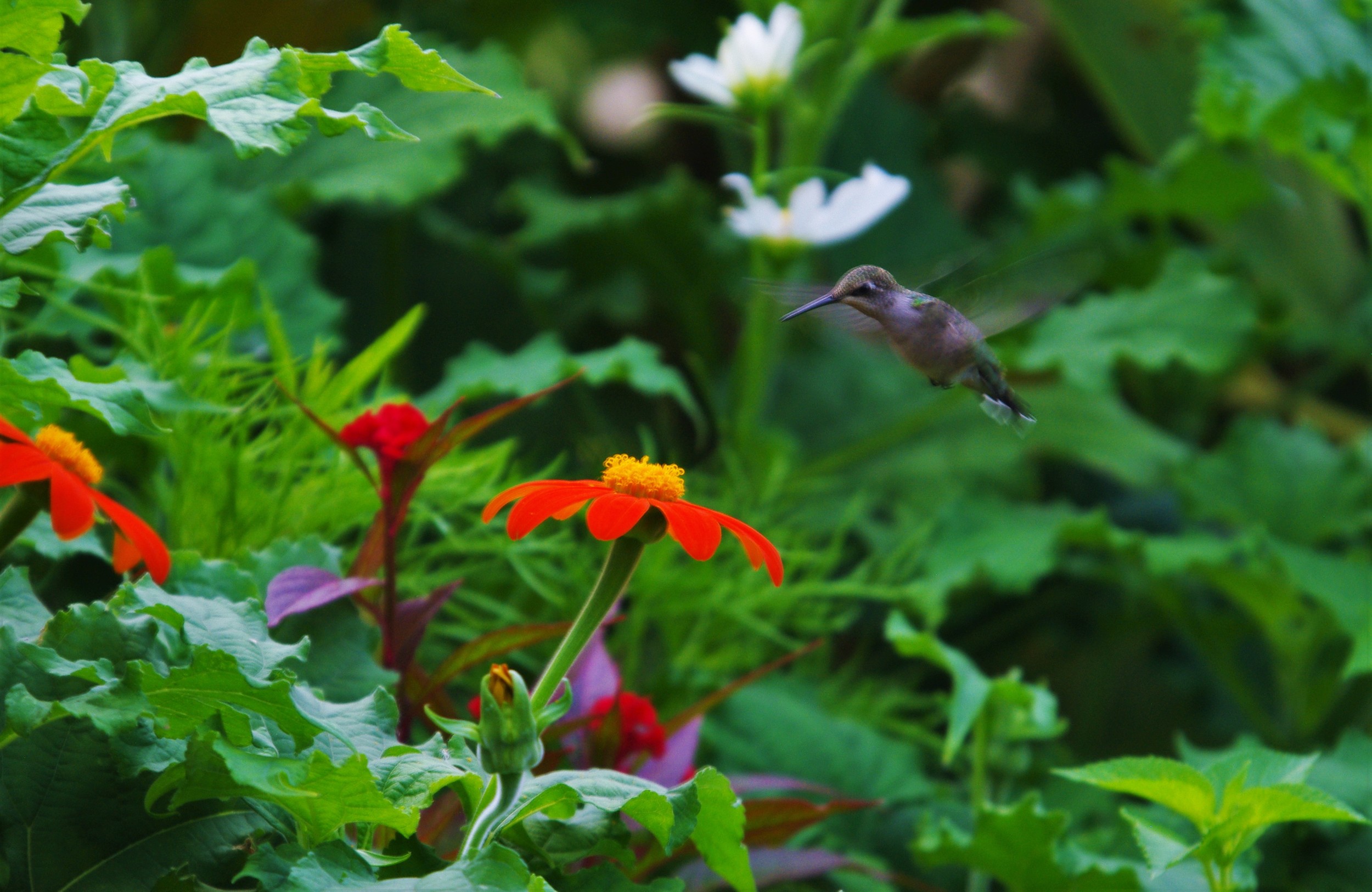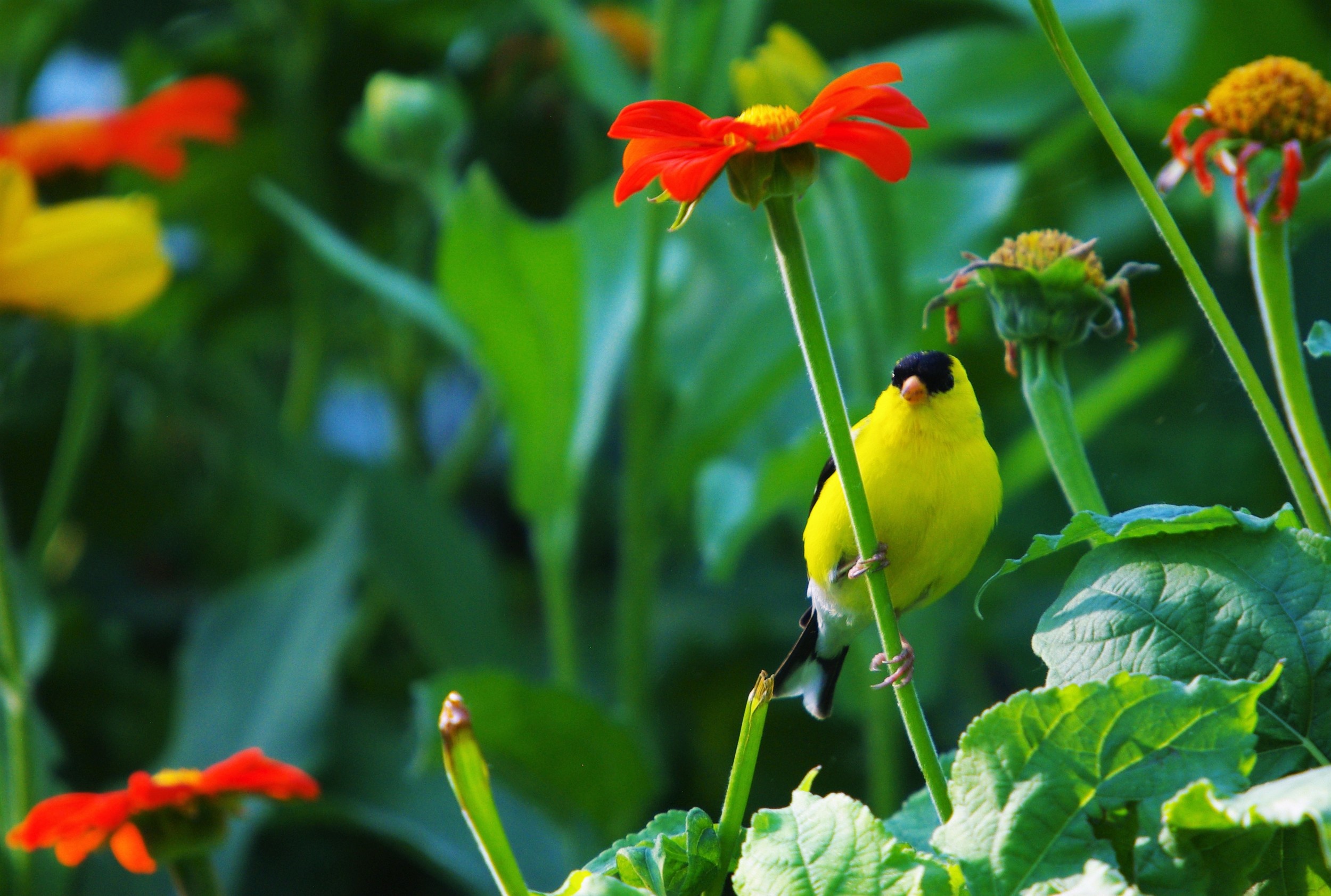Diversity in Planting: Designing for Pollinators in Our 2016 Summer Display
This year’s theme for the summer display at the Boathouse is Fiesta!, or a celebration of summer colors. The design is in a cottage garden style, where a diverse number of plants intermingle harmoniously to make up a single display. Inspired by a visit to Chicago's Botanic Garden and Michigan Avenue, the lively rhythm of the display is accented by the raising of the center of the bed, held together with a wall of cobblestones recycled from streets around St. Louis. With every color of the rainbow represented, our planting list comes out to be 27 different species of flowers and foliage accent plants. Most of these 27 species originated in the Americas, with 12 coming from Mexico, 5 from South America and 3 from North America.
The corners of the display have been planted up with succulents, including powder blue Agave gigantea and red accented Aloe ‘Christmas Carol,’ making the corners resemble what looks like the stern of a sinking rowboat. A special shout out to a few of our dedicated volunteers is deserved for this particular aspect of the display: to Rich, who was poked by the nasty spines of every agave he planted; and to Joyce and Carol who painstakingly planted up the “living wall” of the sunken boat corners. The sides of the boats were constructed out of stained pine lumber and green poly-lined chicken wire stuffed with sphagnum moss. Our volunteers carefully placed 33 individual Sempervivum ‘Black’ in the chicken wire on each side, resembling barnacles on a weathered boat. You know how much your volunteers care when they come back three days in a row, even in pouring rainstorms, so that you can finish planting the display before the weekend. Rich, Sandy, Carol, Joyce, Frank and Norm: We can’t say enough to thank you for your dedication.
The other day I watched a tiger swallowtail butterfly go to and from each bright orange Mexican sunflower (Tithonia ‘Sundance’) to the next. It is not alone, for whether it is bumblebees, honeybees or a pair of hummingbirds, the pollinators seem to particularly enjoy the diversity of our display. While the hummingbirds are attracted to the four cultivated species of salvia in the display, the bees are all over the cosmos, zinnias and Salvia ‘Victoria Blue.’ In designing a pollinator garden, it is all about the diversity of planting – planting flowers that will carry the garden throughout the growing season with bountiful nectar-producing flowers. In horticulture, we learn early on how important a diversity of plants is for a landscape. Plant diversity not only protects against devastation from pests and diseases, but also provides food and habitat for animals, which includes our native pollinators. In our display, we have chosen a random assortment of plants, some of which do not start blooming until mid to late summer. This staggering of bloom times not only makes the display appear different to those who observe the progressive changes, but it also provides flowers throughout summer to hungry pollinators. In two weeks, our most asked about plant, “the one with the big fuzzy leaves,” Tibouchina grandiflora (Glory Bush), will begin putting on a display of clusters of deep purple flowers.
The Boathouse is not the only area that has been planted with pollinators in mind – our Nature Reserve stewards are constantly planting throughout the Park, creating a network of native forbs and grasses. This practice helps provide a retreat for the Park's native animal residents, including monarch butterflies, thanks to the recent creation of a butterfly waystation. To gain some ideas on the creation of your own pollinator garden at home, a good place to start is by planting an assortment of natives that bloom from spring through first frost. (This document provides an excellent resource.)
I encourage you to stroll by this ever-changing natural art piece by the Boathouse. Of the 27 species of plants on display, one visitor recently mentioned, “This is a garden you have to stop and take in...no just walking by and thinking you can take in the full scope of what's before you.” Take your time and observe how all of the plants intermingle with one another in their search for sunlight. The early morning hours are a particularly nice time to view wildlife in and around the garden. And if you see Eric or me tending the garden, do feel free and ask us as many questions as you would like. Similar to other horticulturists throughout Forest Park's history, our garden is meant to inspire gardeners throughout the city, providing an educational opportunity and giving home gardeners ideas about what they can do at home.


